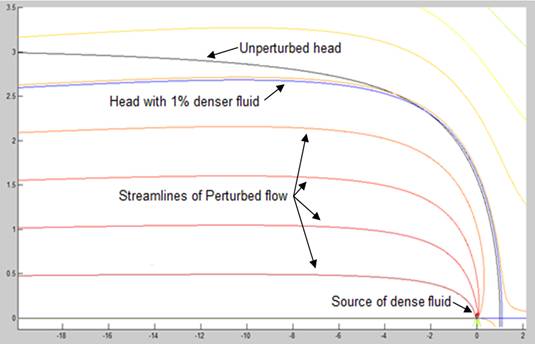

47782-AC8
The role of erosion at the head
of turbidity currents - experiments and theory
Introduction:
Experimental Setup: To
investigate this problem we have built a new flume operating at flow speeds of
1 to 30 cm/sec, which produces Reynolds numbers of 3,000 to 90,000 large enough
to replicate natural situations. Our
experiment is unique in that we inject source fluid from an isotropic injection
nozzle at the base of the flume into an oncoming stream; this fixes the
distance between the current's head and the source, while keeping the flow
steady. The injection nozzle is especially important in that it maintains a two
dimensional flow profile; this replicates the source flow analyzed in our
theoretical model. We have
designed and installed and image acquisition system with camera, clean side
walls and lighting that allows us to establish clearly the position of the
front. We analyze
the shape and dynamics of the head under different flow conditions by varying
flume inclination, source density, injection rate and speed of the uniform
stream. Recently captured photograph of the front shape for
the classical Rankine problem Theoretical Model: We are
developing a theory perturbing the classical ‘Rankine half-body' potential flow
solution, which injects an inviscid source fluid onto an oncoming uniform
stream. In this
problem, the absence of mixing creates a “seperatrix” streamline dividing the
source and oncoming fluids. Our theory
predicts its position, as well as the streamline pattern, velocity and pressure
both inside and outside of the separatrix.
The plot outlines
solution for the case where fluid of 1% higher density is injected: note that
the front moves forward while the tail sinks downwards.
Head perturbation calculation Future Work: We are poised to carry out an experiment using a salt water
solution. We will first change the density level of the incoming fluid and then
adjust the slope angle of the flume between 00and 50. We
will compare the results to our theoretical calculations. We will also
investigate the role of viscosity, which creates boundary layers within the
flume.
Later we will replace the salt water solution with a
particle laden fluid. This will require a new injection nozzle in order for
particles to enter the flume.
We are currently refining our theory by increasing the order
of its accuracy. In addition we are contemplating the use of finite element
software to investigate the role of viscosity and finite flume size.

